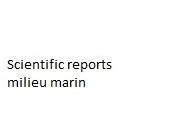
Port-Cros
Faune marine
(Port-Cros National Park, north-western Mediterranean Sea)
The Port-Cros National Park (PCNP) was established in 1963. It encompassed the Island of Port-Cros and the neighbouring island and islets (the Port-Cros Archipelago). Progressively, the PCNP has been entrusted with the management of an increasing number of territories outside the initial territory of 1963. Between 2012 and 2016, the PCNP was engaged in a major redefinition and extension of its territory; the new Port-Cros National Park (N-PCNP), established in 2016, includes the Port-Cros and Porquerolles Archipelagos as core areas (both terrestrial and marine), a vast Adjacent Marine Area (AMA) including the Gulf of Hyères and extending seawards to the edge of the continental shelf, and a discontinuous continental area (Adhesion Area, AA) including five municipalities. The management of the marine area of the Port-Cros Archipelago MPA (Marine Protected Area) can clearly be referred to the MUM type (Multi-Use Management) characterized by a complex zoning of the marine part of the MPA, based upon the uses, the goals of conservation of the habitats and the ecosystems and priorities clearly displayed (artisanal fishing rather than recreational fishing). MUM management strongly contrasts with NTZ (No-Take Zone) management, where any form of human activity is prohibited. In addition to the ban on spear fishing, angling and trawling, the Port-Cros Archipelago MPA has its own artisanal fishing regulations, enshrined in a fishing charter; those regarding maximum vessel length, soak time, mesh size, net length, number of hooks and traps, are more restrictive than outside the MPA; these regulations are strictly enforced, in contrast with a number of Mediterranean MPAs which are actually ‘paper parks’. It is worth noting that, as far as the conservation of the natural heritage is concerned, MUM management, as practiced in the Port-Cros Archipelago MPA, is at least as efficient as NTZ management. In addition, it is compatible with sustainable fisheries in particular, sustainable development in general, and fits well with the concept of the socio-ecosystem.
We have seized the opportunity of having at our disposal one of the oldest Mediterranean MPAs, with exemplary protection and an exceptional level of scientific knowledge, to assess the species diversity (point diversity and alpha diversity), the biomass and the trophic structure of fish (teleosts) assemblages in 5 habitats, - shallow rocky reefs (RS, 0-3 m depth), deep rocky reefs (RD, 5-15 m), relatively shallow Posidonia oceanica seagrass meadows (PS, 10-15 m), deep P. oceanica meadows adjacent to circalittoral habitats soft bottoms (PD, 30-35 m) and coralligenous habitats (C, 25-40 m) -, by sector and type of management. Within the framework of MUM management, three types of management were considered: (i) sites reserved for scuba diving, where artisanal and recreational fishing are totally prohibited (NT, no-take areas); (ii) sites where longlines and trawling (artisanal fishing), spear fishing and angling (recreational fishing) are prohibited (RF, restricted fishing areas); and (iii) sites reserved for artisanal fishers, where spear fishing, angling and trawling are prohibited (AF, artisanal fishing areas). The fish assemblage was assessed at 40 sites, in September and October 2014; at each site, 10 random transects 25 m (50 m at PS) long and 5 m wide were surveyed by scuba diving (RD, PS, PD, C) or snorkelling (RS). The teleost fish species were classified, according to their diet, into 6 trophic groups: planktivorous, piscivorous, macrocarnivorous, omnivorous, mesocarnivorous and herbivorous.
The alpha diversity (number of species per site), mean point diversity (number of species per transect), mean abundance (number of individuals per 100 m²) and mean biomass (kg per 100 m²) were respectively (i) 17-23, 9, 63 and 4 in RS (shallow rocky reefs), (ii) 23-30, 12, 158 and 7 in RD (deep rocky reefs), (iii) 18-28, 9, 60 and 1 in PS (shallow Posidonia oceanica meadow), (iv) 5-10, 3, 137 and 2 in PD (deep P. oceanica meadows) and (v) 10-29, 8, 596 and 18 in C (coralligenous). The trophic structure presented sharp differences between habitats: the dominant groups were mesocarnivorous and omnivorous (RS), piscivorous and mesocarnivorous (RD), herbivorous and planktivorous (PS), planktivorous and mesocarnivorous (PD) and piscivorous and planktivorous (C; with strong contrasts between sites and types of management). The type of management (NT, RF and AF) generally does not matter, with the exception of the coralligenous habitat, This result may seem surprising but it is quite logical: the three types of management that we have considered in Port-Cros Archipelago are just facets of the same type of management, MUM management; they constitute a spatial mosaic, with areas between which most of the fish considered here are constantly moving; it is therefore logical that the differences between these facets of the MUM management are rarely significant.
Overall, the exceptional preservation of the natural heritage around the archipelago of Port-Cros (PCNP), the richness in fish, especially in top predators, and the compatibility with a sustainable artisanal fishery, are the result of an original type of management (MUM management), a severe restriction of the artisanal fishing effort, the prohibition of recreational fishing, effective surveillance and 55 years of rigorous management of human activities. But the balance that has been achieved could be jeopardized tomorrow. The current generation of intelligent fishers is, because of its age, being replaced. Will the new fishers have the wisdom of their elders? But the law is on the side of the PCNP; it arms the Park with powerful weapons, and it is up to the PCNP to ensure that the general interest prevails, that of all current and future users, that of the natural and cultural heritage, against possible depredations of people seeking quick but non-sustainable profits.
Keywords: artisanal fishery, biomass, coralligenous, fishes, management, Marine Protected Area, Posidonia oceanica, rocky reefs, species diversity, trophic groups.
| Authors | Patrick ASTRUCH, Charles-François BOUDOURESQUE, Élodie ROUANET, Laurence LE DIRÉACH, Patrick BONHOMME, Denis BONHOMME, Adrien GOUJARD, Sandrine RUITTON, Jean-Georges HARMELIN |
|---|---|
| Editor | Parc national de Port-Cros |
| Number of pages | 65 |
| Reference | Sci. Rep. Port-Cros natl. Park, 32: 17-82 (2018) |

